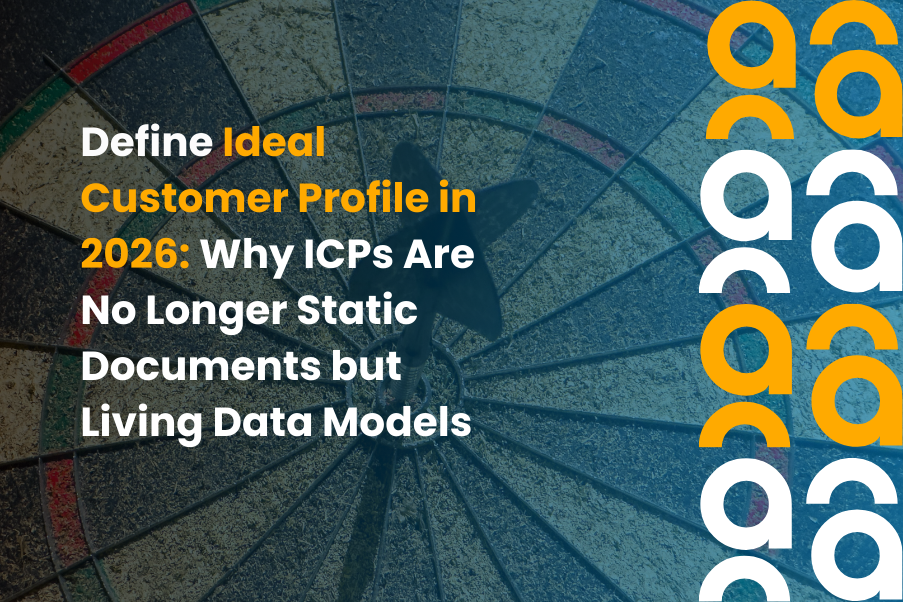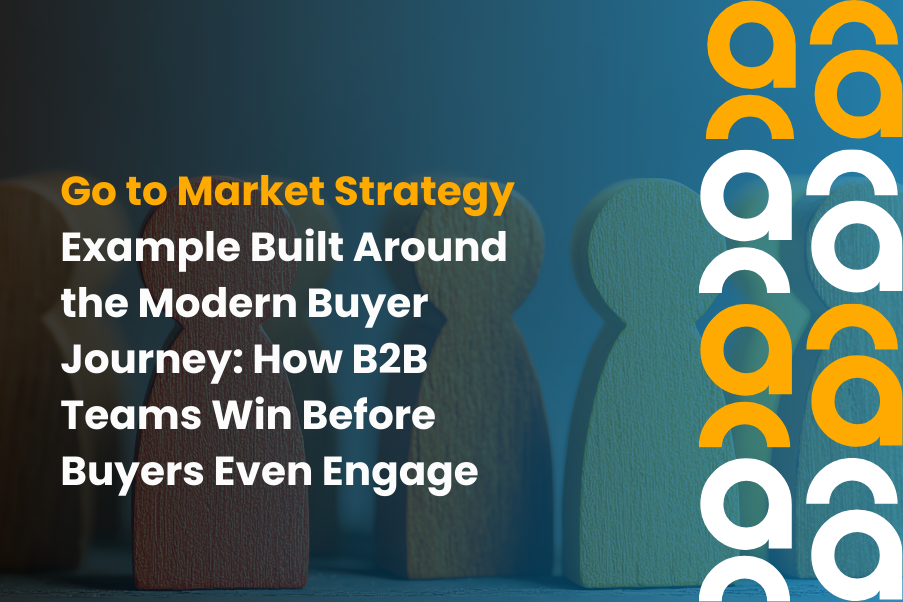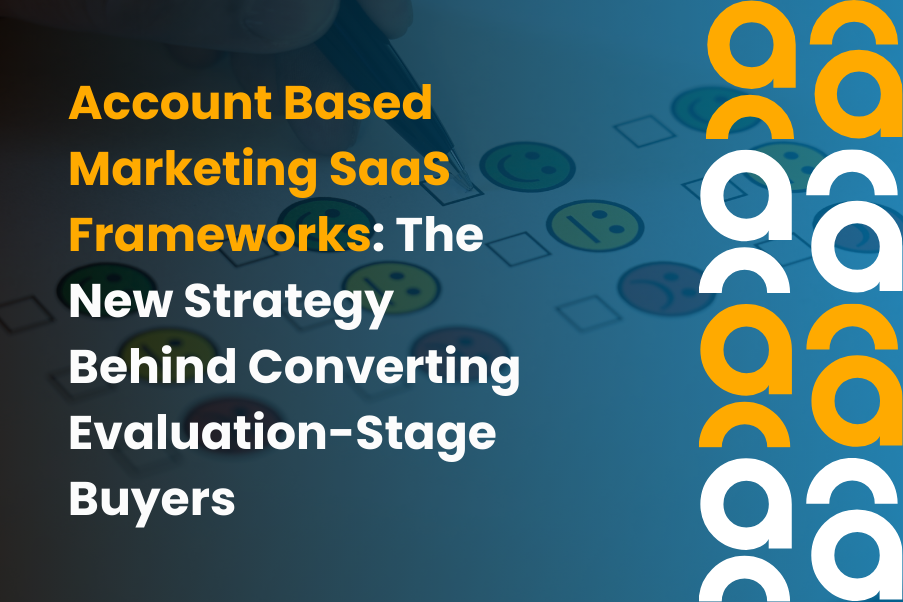Account-Based Marketing Campaigns Fail When Funnel Health Is Ignored

Let’s Start With a Hard Truth
Most account-based marketing campaigns don’t fail because of weak content or small budgets. They fail because the wrong accounts get too much attention, while the right ones are overlooked. That’s what happens when funnel health gets ignored.
If your ABM strategy targets U.S.-based decision-makers and skips over funnel clarity, you’re setting yourself up for poor pipeline results before anything even goes live.
What Funnel Health Means
A healthy funnel doesn’t stop at lead volume. In a functioning B2B account based marketing campaign, marketers focus on stage-by-stage momentum, not just awareness. You need to know:
- Are accounts progressing or getting stuck?
- Are they responding to ABM content?
- Is sales acting on the right ones?
Companies that track funnel progression properly see real impact. According to TOPO, organizations with clear ABM funnel visibility grow revenue 30% faster than those that don’t. That’s not a small lift – it changes the way teams operate.
Campaign Waste Happens Fast Without It
Let’s say you build an expensive content sequence, push it to 50 key accounts, and wait. If most of them never move beyond early clicks, and your team keeps pushing more content blindly, you’re not just wasting money. You’re missing the signs.
A disconnected account-based marketing campaign creates:
- Missed opportunities
- Confused messaging
- Mismatched outreach timing
- Friction between marketing and sales
In fact, 67% of ABM marketers say poor funnel visibility is their biggest barrier to ROI, according to Gartner. And when ROI drops, confidence in the campaign follows.
Misalignment Starts with Equal Treatment
A successful ABM approach means treating different accounts differently. Some are ready for a direct conversation. Others are still researching. A few may not be a fit anymore.
Ignoring this creates a lot of noise and very little movement.
This is where ABM indicators come into play. Signals like engagement spikes, multi-user sessions, or topic-based downloads are not just vanity metrics. They help you know when to press forward, slow down, or walk away.
Ignoring these cues forces sales to guess. And guessing gets expensive.
ABM Content Syndication Needs a Health Check Too
Good ABM content syndication puts relevant assets in front of the right accounts. But without knowing the funnel stage, even the best content feels out of place.
Let’s say an account just started exploring your category. If you send pricing guides or sales decks too early, it pushes them away. But if they’ve already engaged with mid-funnel pieces, sending them another awareness ebook slows them down.
According to DemandGen, 78% of B2B buyers engage more with content that matches their current stage. So when syndication aligns with funnel health, the difference is clear.
Sales Needs More Than a List
Even the most detailed account-based marketing campaign won’t land if sales don’t know which accounts are warm. Marketers often pass over accounts based on email opens or webinar signups, but sales needs more than signals. They need funnel context.
This includes:
- Account history
- Content interactions
- Lead scores
- Sales triggers
Companies that align ABM between sales and marketing can generate 38% higher win rates, according to the Report. It’s not about more outreach. It’s about smarter outreach.
How to Know If Your Funnel Is Healthy
Funnel health isn’t about dashboards filled with charts. It’s about patterns you can act on. Some questions to ask:
- Are accounts consistently moving through stages?
- Do they revisit content tied to later-stage decisions?
- Is engagement dropping after a specific email or asset?
Tracking ABM indicators like these gives you an early warning. You don’t need to overhaul everything – you just need to adjust before the next round of spending.
Segment Smarter. Spend Smarter.
Segmenting based on value and stage helps you avoid wasting effort on cold accounts. For instance, leads that downloaded a technical comparison might be closer to a decision than those who just visited your homepage.
By using account scoring based on both behavior and demographics, your ABM approach shifts from reactive to responsive.
A study by ITSMA shows that teams with advanced ABM segmentation see 20%–40% shorter sales cycles. That’s a major gain with the same headcount.
Tools Only Work When Data Does
Plenty of marketers blame tools when campaigns underperform. But often, the problem is how those tools are used. A great ABM platform won’t fix poor lead data or misaligned goals.
Your stack should help you:
- Monitor stage progression
- Segment accounts based on signals
- Connect engagement to real pipeline movement
But if the inputs are messy – say, outdated contact info or mismatched intent data your campaigns will suffer. No tool can save a campaign running on guesswork.
Check Funnel Health Like You Check Budget
You wouldn’t wait until the end of the quarter to check spend. Funnel health deserves the same attention. That means:
- Weekly account reviews
- Monthly content performance checks by stage
- Quick syncs between marketing and sales
- Flagging stuck deals early, not after the fact
Maintaining funnel health doesn’t require a massive team. It requires consistency. This habit is what separates effective account marketing services from those chasing clicks instead of conversions.
The Real Cost of Ignoring It
Skipping funnel visibility causes bigger problems than low engagement. Over time, it creates a feedback loop where marketing keeps doing what isn’t working, and sales keep chasing accounts that never convert.
Even worse, it leads to decisions based on surface metrics, like email opens or page visits, while pipeline quality keeps slipping.
Also, the majority of marketers agree that pipeline quality is the most accurate measure of ABM success. And pipeline quality comes directly from healthy funnel tracking.
ABM Fails When You Ignore Buying Committees
Most B2B decisions in the U.S. aren’t made by a single buyer. There’s often a committee involved – each member with different priorities, concerns, and timelines. If your account based marketing campaign targets only one contact, you’re missing the bigger picture.
Effective campaigns identify and engage multiple roles. A CFO may care about cost savings, while an operations lead might focus on implementation. Tailoring messages based on each contact’s role keeps the account engaged at multiple levels.
A healthy ABM funnel doesn’t just track one person’s behavior. It maps the interactions of the entire buying group. When you see multiple contacts engaging with your brand, it’s a stronger signal that the account is warming up.
That’s how you build a real account based marketing campaign – not just a set of one-off emails to one lead.
The Hand-Off Between Marketing and Sales Still Breaks Campaigns
Even if marketing drives strong awareness and engagement, everything can fall apart if the sales team doesn’t take the baton at the right time. A weak or unclear hand-off process is one of the biggest reasons an account-based marketing campaign stalls.
Leads are sometimes passed too early, while they’re still educating themselves. Or worse, they’re passed too late, after interest has cooled off.
Fix this by defining clear account stages and triggers for hand-off. Are they reading mid-funnel content? Did multiple stakeholders open your case studies? Are they asking pricing questions?
Shared visibility and timing matter more than tools. This is where a well-aligned account based marketing campaign proves its value. It creates a rhythm between marketing and sales that moves accounts forward, not in circles.
Final Thoughts
An account based marketing campaign should feel like a guided journey. Each stage builds trust, sharpens the message, and brings your audience closer to action. But when funnel health is ignored, even the most thoughtful campaign starts to lose direction.
The smartest teams check signals regularly, adjust messages based on stage, and keep sales involved throughout. They don’t rely on static reports. They watch the accounts and move with them.
That’s what separates campaigns that perform from campaigns that look good on a dashboard, and fizzle when it counts.
Need Help With Funnel-First ABM?
At Almoh Media, we help build account-based marketing campaigns designed to move the right accounts forward. Our approach combines clear funnel metrics, smart ABM content syndication, and sales-ready insights that keep your pipeline strong, not just full.
Let’s build a campaign that actually closes.
-
 Define Ideal Customer Profile in 2026: Why ICPs Are No Longer Static Documents but Living Data Models
Define Ideal Customer Profile in 2026: Why ICPs Are No Longer Static Documents but Living Data Models -
 Go to Market Strategy Example Built Around the Modern Buyer Journey: How B2B Teams Win Before Buyers Even Engage
Go to Market Strategy Example Built Around the Modern Buyer Journey: How B2B Teams Win Before Buyers Even Engage -
 Account Based Marketing SaaS Frameworks: The New Strategy Behind Converting Evaluation-Stage Buyers
Account Based Marketing SaaS Frameworks: The New Strategy Behind Converting Evaluation-Stage Buyers -
 What 2026’s Best-Performing Teams Do Differently when it comes to B2B Account-Based Marketing Campaigns
What 2026’s Best-Performing Teams Do Differently when it comes to B2B Account-Based Marketing Campaigns -
 B2B Account Based Marketing in an Over-Messaged World: The Rise of Context-First Personalization
B2B Account Based Marketing in an Over-Messaged World: The Rise of Context-First Personalization

